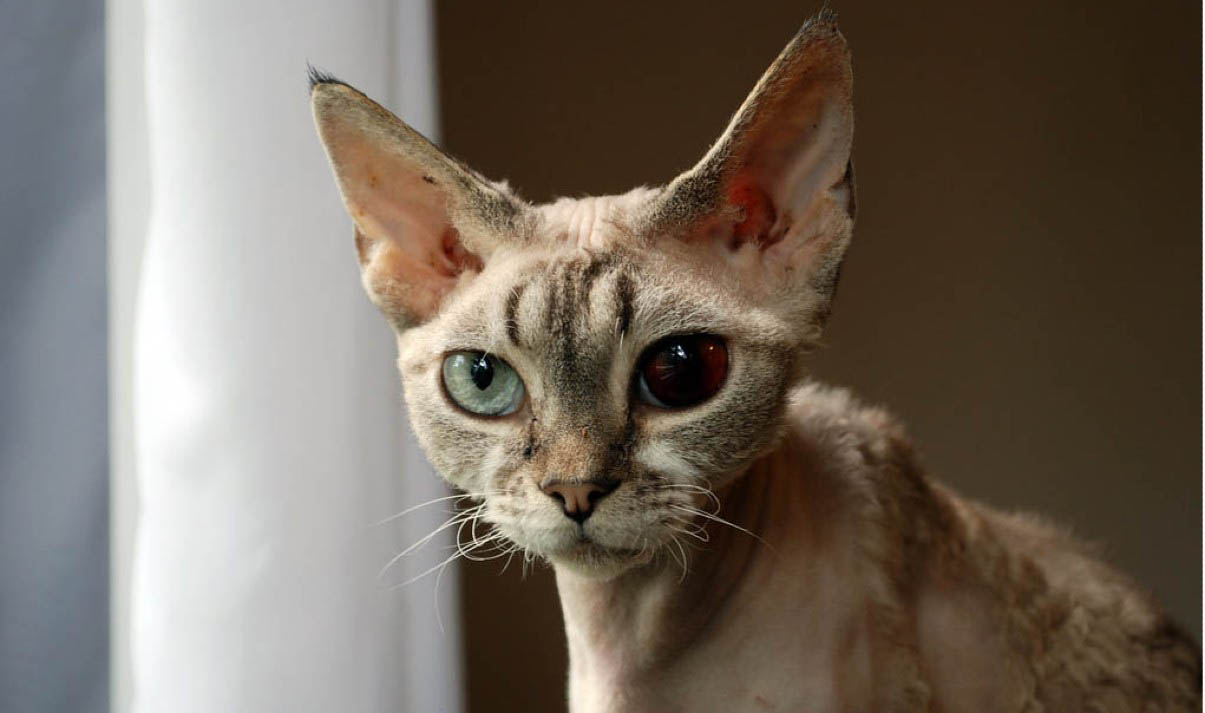Uveitis at a glance
|
What is uveitis?
Uveitis is a painful eye disease in which the uvea, (the pigmented layer that lies between the inner retina and the outer fibrous layer composed of the sclera and cornea) becomes inflamed. It is one of the most common eye disorders in cats and can be potentially very serious.
The disease is classified according to the layer(s) involved.
- Choroiditis or posterior uveitis: Inflammation of the choroid
- Iritis: Inflammation of the iris
- Cyclitis: Inflammation of the ciliary body
- Anterior uveitis: Inflammation of the ciliary body and the iris
- Panuveitis: Inflammation of all the layers of the uvea
Causes
Trauma, infection (bacterial, viral or fungal) and cancer are all potential causes. In many cases, the underlying cause can not be established; this is known as idiopathic.
Immune-mediated:
- Immune-mediated thrombocytopenia
- Immune-mediated vasculitis
- Immune-mediated hemolytic anemia
Systemic:
- Diabetes
- High blood pressure
Cancer:
Infectious:
- Bartonella henslae (cat scratch disease)
- Feline herpesvirus
- Feline infectious peritonitis (FIP)
- Toxoplasmosis
- Feline immunodeficiency virus (FIV)
- Feline leukemia virus (FeLV)
- Cryptococcosis
- Blastomycosis
- Coccidiosis
- Candidiasis
- Histoplasmosis
Other:
- Blunt or penetrating injuries
- Lens-induced anterior uveitis is caused when the lens capsule breaks open leaking fluid into surrounding tissues, which causes an inflammatory response; other causes include hyper-mature cataracts and lens luxation
- Idiopathic (no known cause)
Symptoms
Uveitis may occur in one eye (unilateral) or both eyes (bilateral), and it may be acute (sudden onset) or chronic (slow and progressive). Systemic causes of uveitis tend to occur in both eyes, whereas ocular disorders are more likely to affect just one eye. The most common symptom of uveitis is a colour change to the eye(s), which may be cloudy or red. It is an extremely painful condition, and your cat may squint and paw at his eye. Other symptoms include:
- Pain (squinting, sensitivity to light, excessive watering, third eyelid elevation)
- Swelling of the eyeball
- Changes to the iris
- Abnormal pupil shape
- Eye discharge
- Dull or cloudy appearance to the front of the eye
- Inflammation can cause the eye to become softer (hypotonic)
Diagnosis
Your veterinarian will perform a complete physical examination of your cat, including a thorough examination of the eyes to look for possible trauma. He will obtain a medical history from you, including any other symptoms you may have noticed or recent illness.
Diagnostic workup:
- Baseline tests: Complete blood count, biochemical profile to evaluate the overall health of the cat.
- Antigen or antibody tests: For cats with suspected feline leukemia virus, feline immunodeficiency virus or T. gondii.
- Blood pressure test: To check for hypertension.
- Imaging: Thoracic X-rays to check for fungal diseases or tumours, ultrasound of the eye if an injury is suspected.
- Fluorescein staining: A dark orange die (fluorescein) is placed onto the outer surface of the eye to look for corneal lesions.
- Tonometry: A tonometer is an ophthalmic device with a probe that is used to measure the pressure inside the eye (intraocular pressure) to evaluate for glaucoma. Anaesthetic eye drops are applied to the eyes and the tonometer is placed onto the cornea to gauge IOP. Uveitis usually results in lower intraocular pressure; however, with chronic cases, cats can often develop secondary glaucoma.
- Ophthalmoscopy: Examination of the eye with an ophthalmoscope, a small handheld device that enables your veterinarian to examine the inside of the eye.
- Slit-lamp examination: The veterinarian uses a slit lamp to evaluate the front of the eye under magnification.
Unfortunately, while your veterinarian can diagnose uveitis reasonably easily, finding the underlying cause is not always possible with between 60-75% of cases being idiopathic (unknown cause).
Treatment
In some cases, the veterinarian may refer you to an ophthalmologist to manage your cat’s uveitis.
Treatment for uveitis may include the following:
- Topical anti-inflammatory drugs to reduce inflammation.
- Topical atropine to dilate (enlarge) the pupils, this helps to reduce pain and stops the inflamed iris from sticking to the pupil.
- Analgesics (pain relief).
Manage the underlying cause:
- Control and manage diabetes with diet and/or insulin injections where necessary.
- Supportive care and anti-viral medications (where available) for cats with viral infections.
- Eye removal surgery (enucleation) for cats with tumours of the eye.
- Surgery and/or chemotherapy for cats with other forms of cancer.
- Steroids to manage immune-mediated disorders. These medications can help to suppress the over-active immune system.
Follow-up care will be necessary to monitor progress. Unfortunately, uveitis is a disease that frequently recurs and may require lifelong treatment.

